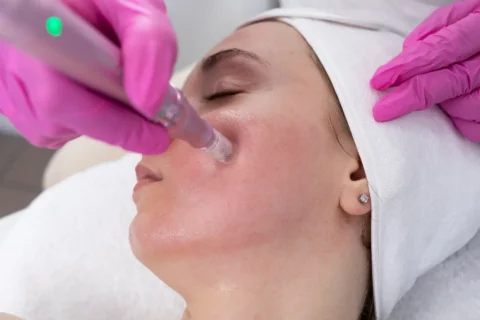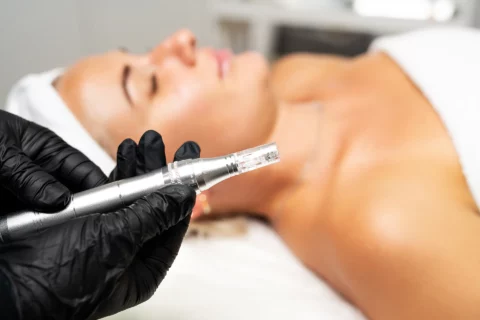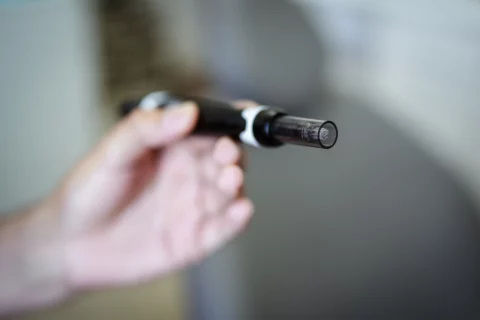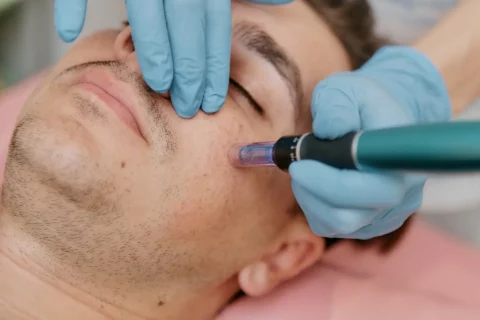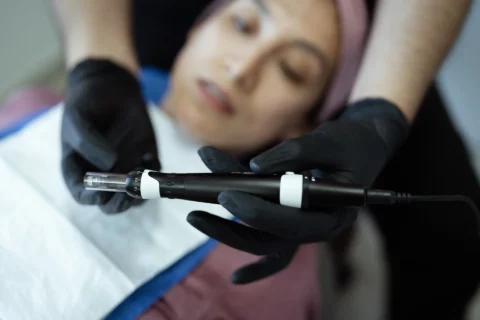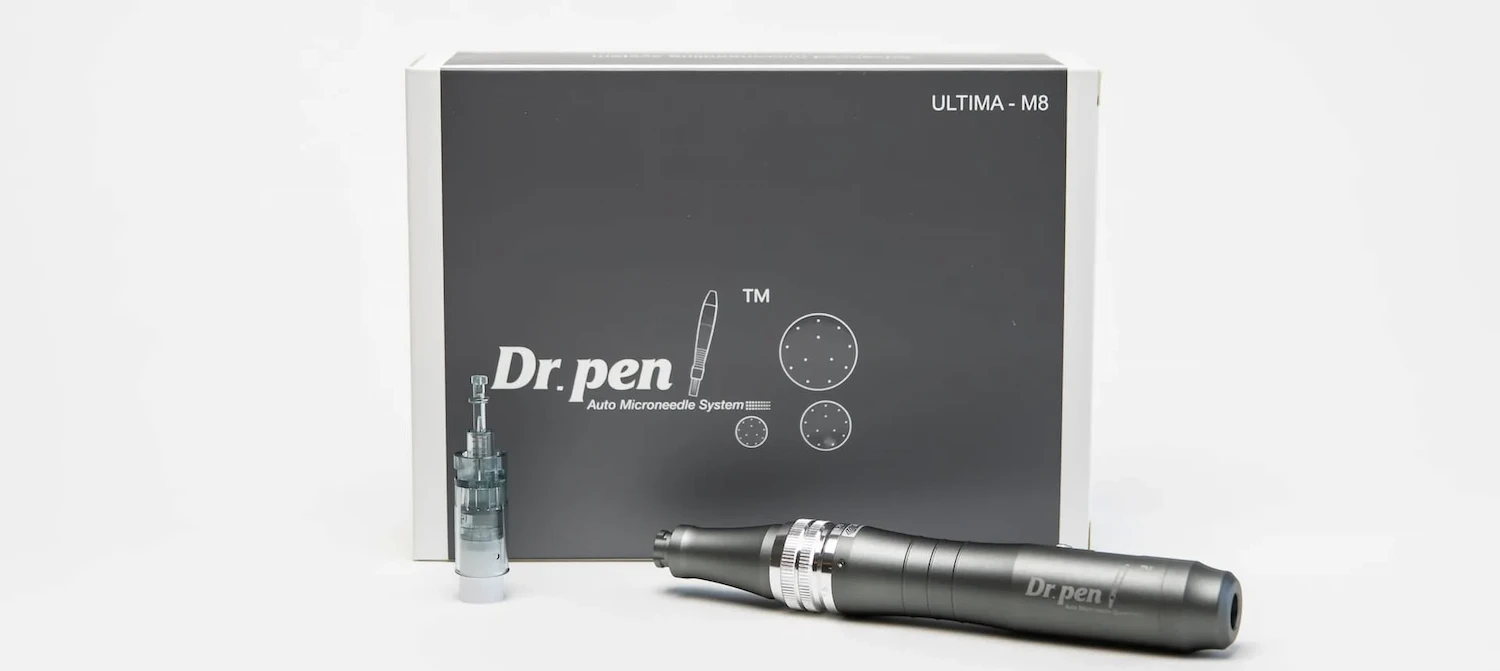Unlocking Your Skin’s True Potential Through Powerful Combinations
Topical serums and growth factors dramatically improve microneedling results by penetrating deep into the skin through the temporary micro-channels created during treatment. These specialized ingredients direct healing, boost collagen production, and target specific concerns like scarring or aging.
Are you frustrated with stubborn skin concerns that seem resistant to your everyday skincare routine? Whether you’re battling acne scars, fine lines, or uneven texture, the solution might lie in the powerful combination of microneedling and specialized topical treatments. This dynamic pairing doesn’t just address surface-level concerns—it transforms your skin from within.
Microneedling alone delivers impressive results, but when paired with targeted serums and growth factors, the transformation can be truly remarkable. This synergistic approach creates a comprehensive skin rejuvenation system that maximizes healing and amplifies results.
Understanding Microneedling: The Foundation of Skin Rejuvenation
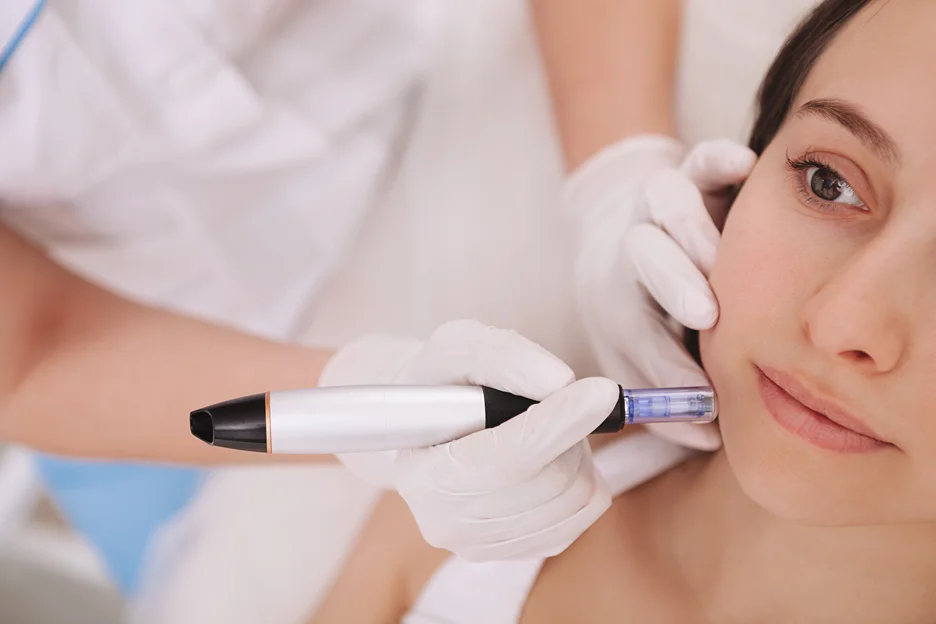
Microneedling, also known as collagen induction therapy, uses tiny needles to create controlled micro-injuries in the skin. These micro-channels trigger your body’s natural wound healing response, stimulating collagen and elastin production.
Modern microneedling pens like the Dr. Pen devices offer adjustable needle depths and consistent penetration, allowing for customized treatments based on your specific skin concerns and treatment areas.
What are the Primary Benefits of Microneedling for the Skin?
Microneedling delivers multiple benefits through a single treatment approach:
- Significantly boosts collagen and elastin production, improving skin firmness and elasticity
- Refines skin texture, smoothing rough patches and minimizing scars
- Enhances overall radiance by accelerating cell turnover
- Reduces the appearance of pores by strengthening surrounding tissue and promoting collagen around the pore walls
- Improves product absorption by creating temporary channels in the skin barrier
Common Skin Concerns Addressable with Microneedling
This versatile treatment effectively tackles numerous skin issues:
- Acne scarring (including atrophic, ice pick, and boxcar scars)
- Fine lines and developing wrinkles
- Hyperpigmentation, including melasma and sun damage
- Enlarged pores
- Stretch marks
- Dull, lackluster complexion
Is Microneedling Safe for All Skin Types?
One of microneedling’s greatest advantages is its suitability for all skin types and tones, including darker skin that may be susceptible to hyperpigmentation with other treatments.
However, certain conditions warrant caution—active acne, eczema, psoriasis, or any current skin infection typically require postponing treatment. Professional consultation is essential to determine if microneedling is appropriate for your specific situation.
The Power Couple: Why Topicals Are Essential for Microneedling Success
Think of microneedling as creating temporary superhighways directly into your skin. Under normal conditions, your skin barrier prevents most products from penetrating deeply—an essential protective function.
Microneedling temporarily suspends this barrier function, creating a critical window for delivering active ingredients to deeper skin layers where they can work most effectively.
How Micro-Channels Enhance Serum Penetration
Studies show that topical product absorption increases by up to 3,000% immediately following microneedling. This dramatic improvement in delivery efficiency means ingredients can reach their cellular targets directly, bypassing the stratum corneum (outer skin layer) that typically blocks or significantly reduces penetration.
Growth Factors: The Skin Rejuvenation Accelerators
Growth factors are specialized proteins that stimulate cell growth, proliferation, and differentiation. When applied post-microneedling, these powerful molecules direct and enhance the healing process, signaling cells to produce more collagen and elastin while orchestrating proper tissue regeneration. This guided healing results in superior structural improvements compared to the skin’s natural, unassisted recovery process.
Recommended Ingredients for Microneedling Synergy
The following ingredients show exceptional compatibility and enhanced efficacy when paired with microneedling:
| Ingredient | Benefits |
| Hyaluronic Acid | Provides intense hydration, plumps skin, and supports the healing environment. |
| Peptides | Signal cells to produce more collagen and elastin, reinforcing skin structure. |
| Epidermal Growth Factor (EGF) | Accelerates cell regeneration and healing processes. |
| Fibroblast Growth Factor (FGF) | Stimulates fibroblasts to produce structural proteins. |
| PDRN (Polydeoxyribonucleotide) | Supports tissue repair while reducing inflammation. |
| Exosomes | Facilitate advanced cellular communication and regenerative processes. |
| Niacinamide | Strengthens barrier function, reduces inflammation, and minimizes hyperpigmentation. |
| Ceramides | Restore barrier integrity and enhance moisture retention. |
Targeting Specific Skin Concerns with Specialized Serums
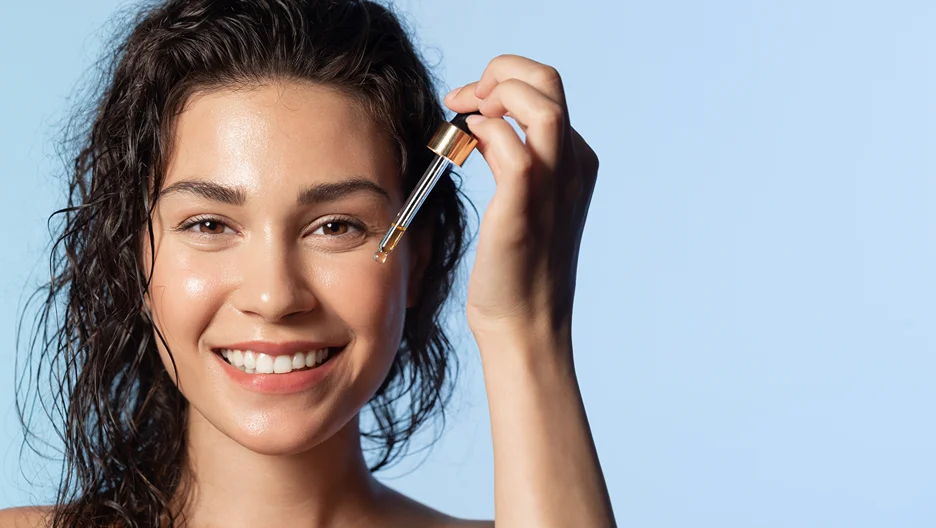
Different skin concerns respond best to specific ingredient combinations:
- Anti-Aging: Peptides, growth factors, and hyaluronic acid work synergistically to improve elasticity and smooth wrinkles
- Acne Scars: Growth factors, PDRN, and properly timed vitamin C accelerate tissue remodeling
- Hyperpigmentation: Niacinamide and vitamin C inhibit melanin production and transfer
- Sensitivity/Redness: Hyaluronic acid, ceramides, and PDRN reduce inflammation while supporting healing
The Application Advantage: When and How to Use Topicals
The period immediately following microneedling represents the optimal absorption window. During the first 24-48 hours, micro-channels remain partially open, allowing for enhanced penetration of beneficial ingredients.
This timing is critical—products applied during this phase can reach up to 3,000% greater penetration compared to application on intact skin.
Recommended Post-Microneedling Skincare Routine
For optimal results and minimum irritation, follow this sequence:
- Cleanse with a gentle, pH-balanced cleanser
- Apply professional-grade serums containing growth factors, peptides, or hyaluronic acid
- Follow with a simple, fragrance-free moisturizer containing ceramides
- Once healing begins (typically day 2), apply broad-spectrum SPF 30+ sunscreen during daylight hours
Ingredients to Avoid Post-Microneedling
Certain ingredients can cause significant irritation when applied to freshly microneedled skin:
- Retinoids (retinol, tretinoin)
- Alpha and beta hydroxy acids (glycolic, lactic, salicylic)
- Vitamin C in L-ascorbic acid form (wait 48+ hours)
- Benzoyl peroxide
- Fragrance and essential oils
- Physical exfoliants
- Alcohol-based products
How to Minimize Discomfort and Promote Faster Healing
Enhance recovery and comfort with these supportive measures:
- Apply cool (not cold) compresses for 5-10 minutes if experiencing heightened sensitivity
- Use hydrating sheet masks specifically formulated for post-procedure skin
- Maintain consistent internal hydration by drinking adequate water
- Avoid excessive heat exposure (hot showers, saunas, intense exercise) for 48 hours
Lifestyle Factors That Enhance Microneedling Outcomes
Support your skin’s regeneration through:
- Consistent hydration (8+ glasses of water daily)
- Antioxidant-rich diet including colorful fruits and vegetables
- Diligent sun protection, including physical barriers (hats, sunglasses)
- Adequate sleep to support cellular repair processes
- Avoiding smoking and excessive alcohol consumption
When to Resume Makeup Application
Allow skin to fully close and initial sensitivity to subside before applying makeup, typically 24-48 hours post-treatment. When resuming makeup, choose mineral-based formulations free of potential irritants, and always apply with thoroughly cleaned brushes or sponges to prevent introducing bacteria.
Navigating Your Options: Professional Guidance & Product Selection
Quality matters significantly when choosing products to pair with microneedling:
- Consult with a licensed skin care professional familiar with your skin history
- Prioritize medical-grade formulations with proven efficacy and safety profiles
- Look for products specifically formulated for post-procedure application
- Consider professional-exclusive products like advanced PDRN skin boosters and specialized growth factor serums
Choosing a Qualified Professional for Microneedling Treatments
The practitioner’s expertise directly impacts your results and safety:
- Verify proper licensing and specialized training in microneedling
- Ensure they follow strict sterilization protocols and use single-use needles
- Review before/after photos of their actual clients
- Confirm they perform thorough consultations addressing medical history and contraindications
Potential Risks of Inappropriate Product Combinations
Using the wrong products post-microneedling can lead to:
- Prolonged irritation and inflammation
- Potential infection if non-sterile products are introduced
- Hyperpigmentation from inflammatory responses
- Compromised results due to interference with the natural healing cascade
Conclusion
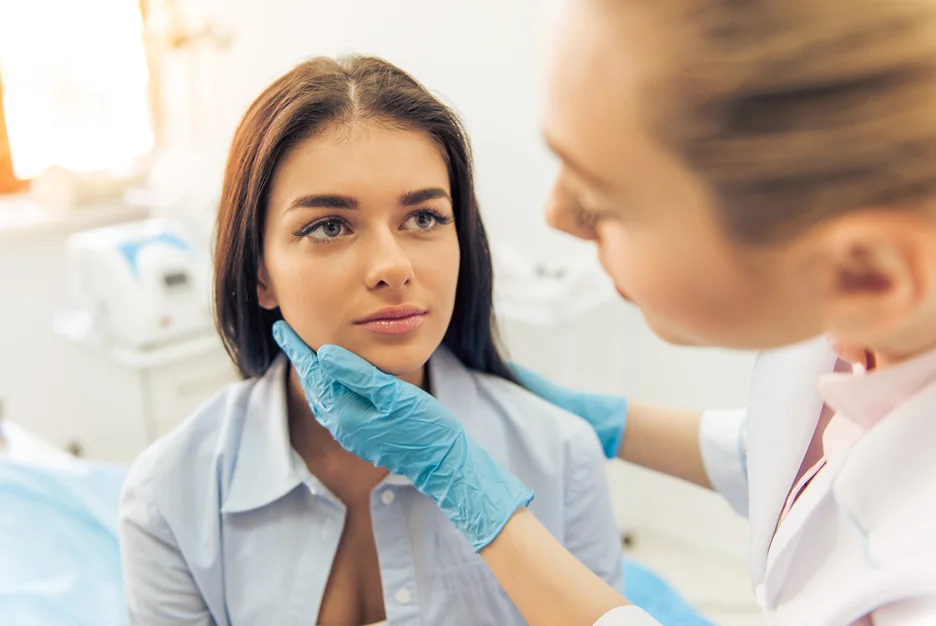
The synergistic combination of microneedling with targeted topical treatments represents one of the most effective approaches to addressing stubborn skin concerns. This partnership works by creating optimal conditions for ingredient delivery while simultaneously stimulating your skin’s natural regenerative processes.
By understanding the science behind this powerful combination and selecting professional-grade products specifically designed to complement microneedling, you can achieve transformative results that far exceed what either approach could accomplish independently.
For personalized guidance on incorporating microneedling and advanced topicals into your skincare regimen, consult with a qualified skincare professional who can assess your unique needs and develop a customized treatment plan. With the right approach, your journey to dramatically improved skin texture, tone, and overall appearance begins with your very first treatment.
